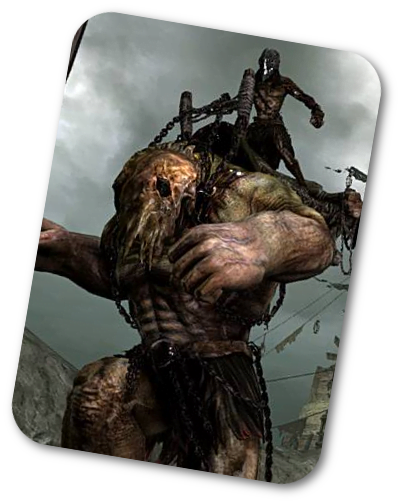Okay, no preamble, let’s talk about making Dark Souls monsters in a board game.
I haven’t got the Dark Souls board game and I don’t think that having it would actually be illuminating. I’m not trying to find out how the makers of Dark Souls would do a thing, I want to find out how I would approach a problem of representation.
That out of the way, here’s a puzzle.
How would I make a Dark Souls Monster in a game I can make?

If you’ve never played a Souls game, the monsters in it tend to resemble typical RPG monsters at first, but don’t really seem to behave the way most people are used to ‘videogame monsters’ behaving. The creatures in Dark Souls hit extremely hard, and take a hit or two to actually die, even at the start of the game. They’re not just heavy hitters but they’re also positioned in ways that make them really dangerous, which in the Souls games tend towards encouraging the player to approach everything cautiously until they’ve reached a certain level of mastery.
When you start to really observe these monsters, you learn a bit more about how they behave. Because while at first they seem kind of sophisticated creatures, capable of picking the right way to mess with you, lots of that is a combination of their lethality and unpredictability. Until you know them, they seem to be smarter than they are. And when you do know them, you realise that a lot of their ‘AI’ is kind of random.
I don’t mean ‘lol random’ as much as I mean that the monsters seem to have a very simple set of rules for how they behave, and most of their behaviour is made up of long, slow animations with (usually) clear signals, chosen at random. This can mean sometimes a creature tries the same move two or three times in a row, but it might follow up those attacks with something really different.
There are other behaviours; monsters are typically parryable and they have vulnerabilities in a variety of ways; when you get up close, they’ll often opt for a particular attack, type, when you get too far away, they’ll snap back, suggesting they have some AI constraints that care about whether or not they can reach you. Some do things to support other things, like throwing oil at you while others throw fire.
Now, there are a lot of ways to represent this kind of thing. D&D uses a statistic sheet, a player coordinating them, a set of tactics as rules and some die rolls to represent monsters. Catacombs uses a wooden disc and some icons. It all depends on how much work you want to put into realising the idea.
My notion for how to represent this, then, is a small deck of cards representing the monster. Each deck is maybe six or seven cards, and when the monster is engaged, you shuffle that deck (at the start of the combat), and flip the top card. This represents the way the AI opts for randomness; the face of the card show you the move the monster does… but.
Okay, here’s an idea.
Next up: Let’s model it out.